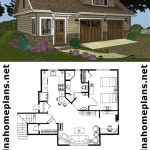Build a Home Gym in Your Garage: DIY Plans and Free Ideas
Creating a home gym within a garage space offers a cost-effective and personalized fitness solution. Converting a garage into a functional workout area involves careful planning, resourcefulness, and often, a do-it-yourself (DIY) approach. This article explores ideas, provides potential plans, and identifies resources for those seeking to build a home gym in their garage, focusing on achieving results without excessive expenditure.
The primary benefit of a garage gym lies in its accessibility and customization. Individuals can tailor the equipment and environment to their precise needs and preferences, eliminating the need for gym memberships and travel time. The initial setup cost can be controlled through selective equipment acquisition and DIY construction techniques, making it a financially viable option for long-term fitness.
Planning and Preparation: Laying the Foundation for Success
Before commencing any physical construction, a comprehensive planning stage is essential. This involves assessing the garage space, determining the intended workout activities, and establishing a budget. Careful planning will prevent costly mistakes and ensure the final product aligns with the user’s fitness goals.
The first step is to accurately measure the garage dimensions. This includes length, width, and height. Identify any obstructions, such as support beams, pipes, or electrical outlets. Document the location of these features in a detailed sketch. Understanding the available space will dictate the type and amount of equipment that can be accommodated.
Next, decide on the primary focus of the gym. Will it be geared towards strength training, cardiovascular exercise, or a combination of both? This decision will influence the selection of equipment. For strength training, consider items such as a power rack, weight bench, barbell, and dumbbells. For cardiovascular exercise, a treadmill, elliptical machine, or stationary bicycle might be appropriate.
Developing a realistic budget is critical. Prioritize essential equipment and consider acquiring used or refurbished items to reduce costs. DIY projects, such as building a weight platform or storage solutions, can further minimize expenses. Allocate a portion of the budget for flooring, lighting, and ventilation improvements.
Consider the existing infrastructure of the garage. Evaluate the electrical capacity to ensure it can handle the power requirements of equipment such as treadmills or air conditioners. Inspect the garage door and ensure it operates smoothly and securely. Identify any areas that require repair or reinforcement.
Finally, research potential DIY plans and free resources online. Numerous websites and forums offer detailed instructions for building various gym accessories, such as weight racks, benches, and storage solutions. Utilize these resources to gain inspiration and develop a customized plan that meets specific needs and budget constraints.
Implementing DIY Construction Projects: Maximizing Value and Customization
DIY construction projects are a cornerstone of building a cost-effective garage gym. By undertaking some of the labor personally, individuals can significantly reduce the overall expense. Several projects are particularly well-suited for DIY implementation, including flooring, weight platforms, and storage solutions.
Garage flooring often requires improvement to provide a safe and comfortable workout surface. Options include interlocking rubber tiles, rolled rubber flooring, or epoxy coatings. Rubber flooring offers excellent cushioning and sound absorption, making it ideal for areas where weights are dropped. Epoxy coatings provide a durable and aesthetically pleasing finish, but may not offer the same level of impact absorption.
DIY flooring can significantly reduce costs. Interlocking rubber tiles are relatively easy to install and require minimal tools. Rolled rubber flooring can be cut to size with a utility knife and secured with adhesive. Epoxy coatings require more preparation, including thorough cleaning and surface preparation, but can be applied with readily available tools and materials.
Weight platforms are essential for protecting the garage floor and reducing noise during weightlifting exercises. A simple weight platform can be constructed from plywood and rubber mats. Cut plywood sheets to the desired size and layer them to create a solid base. Cover the plywood with rubber mats, securing them with adhesive or screws. The resulting platform provides a stable and shock-absorbing surface for performing squats, deadlifts, and other weightlifting movements.
Storage solutions are crucial for maintaining an organized and clutter-free gym environment. DIY storage shelves can be built from lumber and hardware. Design the shelves to accommodate dumbbells, weight plates, and other equipment. Consider incorporating pegboards or hooks for storing resistance bands, jump ropes, and other small items.
Repurposing existing materials can further reduce the cost of DIY projects. Old tires can be used to create plyometric boxes or homemade medicine balls. Scrap lumber can be used to build small shelves or platforms. Creative reuse of materials not only saves money but also promotes sustainability.
Sourcing Equipment and Maximizing Space: Achieving a Functional and Efficient Gym
The selection and arrangement of equipment are crucial factors in creating a functional and efficient garage gym. Carefully consider the available space, the intended workout activities, and the budget when choosing equipment. Strategic space utilization will maximize the workout area and prevent clutter.
Prioritize essential equipment based on individual fitness goals. For strength training, a power rack or squat stand is a fundamental piece of equipment. These structures provide a safe and versatile platform for performing squats, bench presses, and other compound exercises. A weight bench is also essential for many strength training exercises.
Consider purchasing used or refurbished equipment to reduce costs. Websites and online marketplaces often offer a wide selection of used gym equipment at discounted prices. Inspect used equipment carefully for signs of wear and tear before making a purchase. Ensure that all moving parts are functioning properly and that the equipment is structurally sound. Refurbished equipment is typically inspected and repaired by professionals, providing a higher level of assurance regarding quality and functionality.
Optimize the layout of the gym to maximize the available space. Position equipment strategically to allow for adequate movement and prevent obstructions. Consider using foldable or collapsible equipment to save space when not in use. For example, a folding weight bench can be stored against a wall when not needed.
Wall-mounted storage solutions can help to keep the gym organized and clutter-free. Install shelves or hooks to store dumbbells, weight plates, and other equipment. Consider using vertical storage racks to maximize space utilization. Vertical racks can be used to store barbells, weight plates, and resistance bands.
Incorporate multipurpose equipment to save space and reduce the number of individual items required. A power rack can be used for a variety of exercises, including squats, bench presses, pull-ups, and dips. Adjustable dumbbells can replace multiple sets of fixed-weight dumbbells, saving space and money. Resistance bands can be used for a wide range of exercises and require minimal storage space.
Consider the lighting and ventilation of the garage. Adequate lighting is essential for safety and visibility. Install additional light fixtures if necessary. Proper ventilation is crucial for maintaining a comfortable workout environment. Consider installing a fan or air conditioner to improve air circulation and temperature control.
By following these guidelines and utilizing available resources, individuals can successfully build a functional and cost-effective home gym in their garage. The key is careful planning, resourceful DIY construction, and strategic equipment selection.

23 Home Garage Gym Ideas For Set Up Storage Planner 5d

Creative Diy Garage Gym Ideas To Maximize Your Space Trusscore

Our New Home Gym Separate Building In Backyard Nesting With Grace

Our New Home Gym Separate Building In Backyard Nesting With Grace

How To Turn Your Garage Into A Fitness Room

I Built My Dream Garage Home Gym

Our New Home Gym Separate Building In Backyard Nesting With Grace

Set Up A Small Home Gym On Budget Organized Ish

How To Turn Your Garage Into A Fitness Room

20 Small Home Gym Ideas And Half Garage Gyms Motive8
Related Posts








